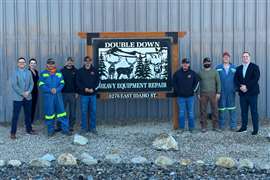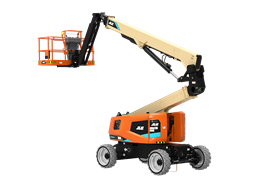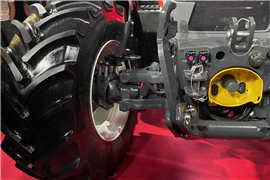Reinvention and resilience of Parker Filtration reaps rewards for customers
16 July 2021
To keep pace with increasingly fast business cycles there is the necessity to adapt to change, with Parker Filtration focused on pursuiting cleanliness.
The Filtration Group at the Parker Hannifin Corp. has reinvented itself over the past several years to better serve a wide range of customers as well as incorporate the Clarcor filter business it acquired in 2017.
Adapting to change is an endless pursuit with fuel filter designs having to evolve to keep pace with changes in diesel engine emissions regulations and the chemistry of the fuel.
One truth that has remained constant is that heavy duty on- and off-road equipment still require effective engine filtration to keep working through challenging conditions.
Parker Filtration’s original equipment (OE) business is handled by the Engine Mobile Original Equipment (EMOE) division, which encompasses the Racor and Fuel Manager brands of fuel, crankcase, oil, air and marine filtration products. The division can draw on the products and expertise of dozens of Parker Hannifin subsidiaries and more than 57,000 employees globally.
Wayne Dubé, the fuel filtration product manager at Parker Filtration, said, “Internally, in support of Parker’s WIN Strategy, Parker formalized the ‘Simple by Design approach’. That term has a lot of different meanings within the organization, but an important one is utilizing the strength of Parker as a whole.
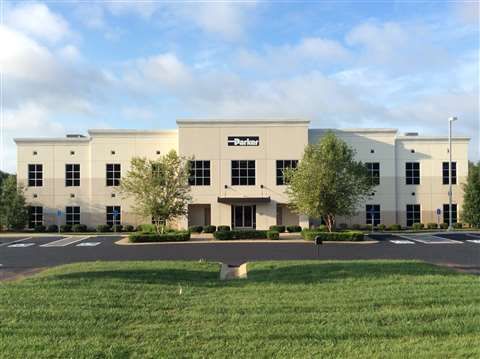 The Parker Filtration Innovation Center focuses on future trends and the future of filter media
The Parker Filtration Innovation Center focuses on future trends and the future of filter media
“We are looking across the various Parker organizations and sharing and utilizing as many of the resources as we can. For example, Parker designs and manufactures engineered seal products, adhesives and other components used in our filters. Leveraging the strength of Parker for our benefit, and that of our customers, is a key part of the path.”
The 82,000 square feet Parker Filtration Innovation Center in Columbia, Tennessee, helps keep an eye where the path is leading. This Innovation Center develops cutting-edge filtration technologies that can then be applied to multiple applications.
Parker scientists engineer new media and filter elements that are specific to a customer’s product design and filtration requirements. In addition to the Innovation Center, engineers are located in Nebraska.
Evolution of being cross-functional makes an impact
Another advantage of the Innovation Center is the use of computer simulation and modeling to predict performance, as well as testing harsh environments before products are used in real-world scenarios.
Brad Fleming, engineering manager/site leader with Parker Filtration., explained, “The Innovation Center is looking long-term at future trends and the future of filter media, where our divisions are focused on immediate customer needs. They look at what is going on in the market and what we can do with media to improve our filtration capabilities.“
Dubé added, “As the success of a product continues to grow, we want to be able to manufacture it closer to where our customers are located. That means having a design that is easily manufactured in multiple locations globally.
“Our team is now comprised engineers in five locations led by California-based division engineering manager Chris Van Lewen, but we work as one team and we are cross-functional.
“We have engineers that sit in Mississippi, Connecticut and California. We are not necessarily working on location-specific projects at each center, because we are a blended team that works together to create solutions for our customer’s filtration needs.”
Elevation of end-user experience drives growth
One of the most innovative products to come from Parker Filtration’s EMOE Division is the Fuel Manager GEN V fuel filter/water separator. The modular filters are designed for agricultural, industrial and construction equipment, as well as generators and commercial vehicles.
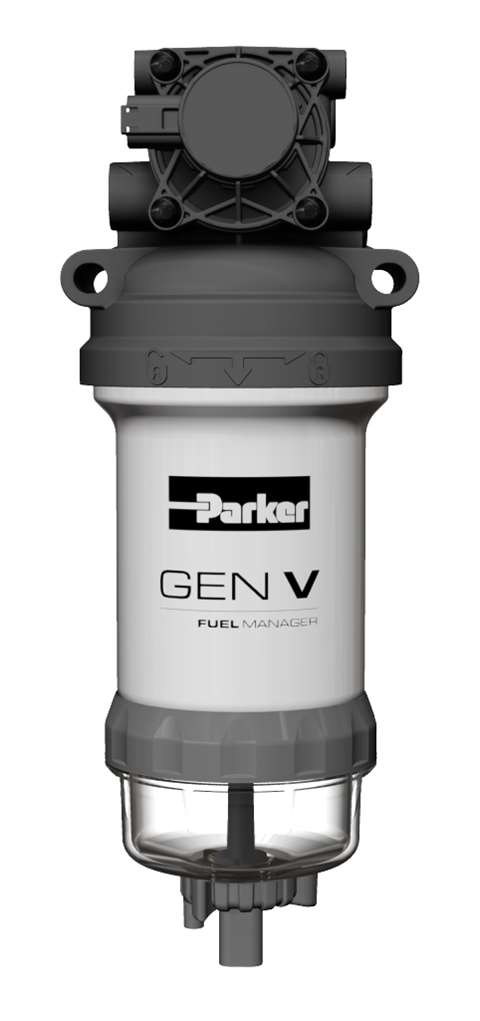 Parker Filtration's Fuel Manager GEN 5 fuel filter/water separator
Parker Filtration's Fuel Manager GEN 5 fuel filter/water separator
The true genesis of the project was during conversations with engineers at engine and equipment manufacturers as well as dealer service departments and the end-user.
Dubé described the end-users as a group “Who really see the challenge day-to-day and will tell you, quite frankly, what you need to do to make the product better.
“We made sure the new product is designed in such a way that it improves the end-user experience. A machine is only valuable if it is operating, so we want to make sure that our product provides the maximum amount of up time and actually improves productivity for the operator.”
Equipment manufacturers wanted to extend service intervals from a norm of 500 hours to 750 hours, and even beyond a thousand hours. This suggested larger filters to make room for higher performing media. However, simply making bigger fuel filters did not appear to be an option.
“More and more, we are hearing that customers want improved water separation. The concern is that more biodiesel is being used in blends with diesel fuel, and that does make water separation more difficult.
“With a traditional fuel filter that separates water by rejecting it on the surface, as that filter loads up with particulate contaminants over its life, the media’s ability to separate water can be reduced.
“Customers want water separation performance to be maintained at a certain efficiency throughout the life of the filter, so that means using a media pack that coalesces water.”
GEN V product has biodiesel compatiblity
Raj Kurri, application engineering manager at Parker Filtration, stated, “Our customers around the world are also looking for more biodiesel compatible products. We made sure the GEN V product was biodiesel compatible, in terms of improved water separation.”
Rather than limiting their focus on the dimensions of a filter, the product development team stepped back for a broader picture. The envelope that a filter needs on a machine is not limited to its physical size.
Dubé added, “With the Tier 4 emissions level, we heard pretty much the same thing from all of the major OEs. Customers wanted smaller filters that captured more particles and pulled out more water, and they wanted the filters to last longer. That was a big challenge.
“We also looked at the serviceability aspect. By making the new filter easily serviced without tools and using only one hand, we could make the filter bigger because the overall space claim was smaller.
“That helped move us in the direction of lasting longer, because we could make the filter bigger so that it would hold more media that in turn holds more particles and separates water better over time. The serviceability aspect led to the real engineering breakthrough in this product.”
Servicing the filter only requires one-half turn to remove and install. When the service element is fully installed it provides three forms of sensory feedback. There is an audible click, the engagement is felt by the hand and the customer’s logo and part number face forward.
According to Fleming, the Fuel Manager GEN 5 filter was designed for “Any market that needs to really minimize their downtime. You can change this filter out in under a minute.
“Some people like that for convenience. Others require it, such as if you’re running a generator and for whatever reason the filter clogs up. You can quickly change this filter out with no tools, click the other one in and you are up and running again.”
This article originally appeared in the May 2021 issue of Diesel Progress.
Click here to learn more about Parker Hannifin’s Engine Mobile Original Equipment (EMOE) division
POWER SOURCING GUIDE
The trusted reference and buyer’s guide for 83 years
The original “desktop search engine,” guiding nearly 10,000 users in more than 90 countries it is the primary reference for specifications and details on all the components that go into engine systems.
Visit Now
STAY CONNECTED




Receive the information you need when you need it through our world-leading magazines, newsletters and daily briefings.
CONNECT WITH THE TEAM











